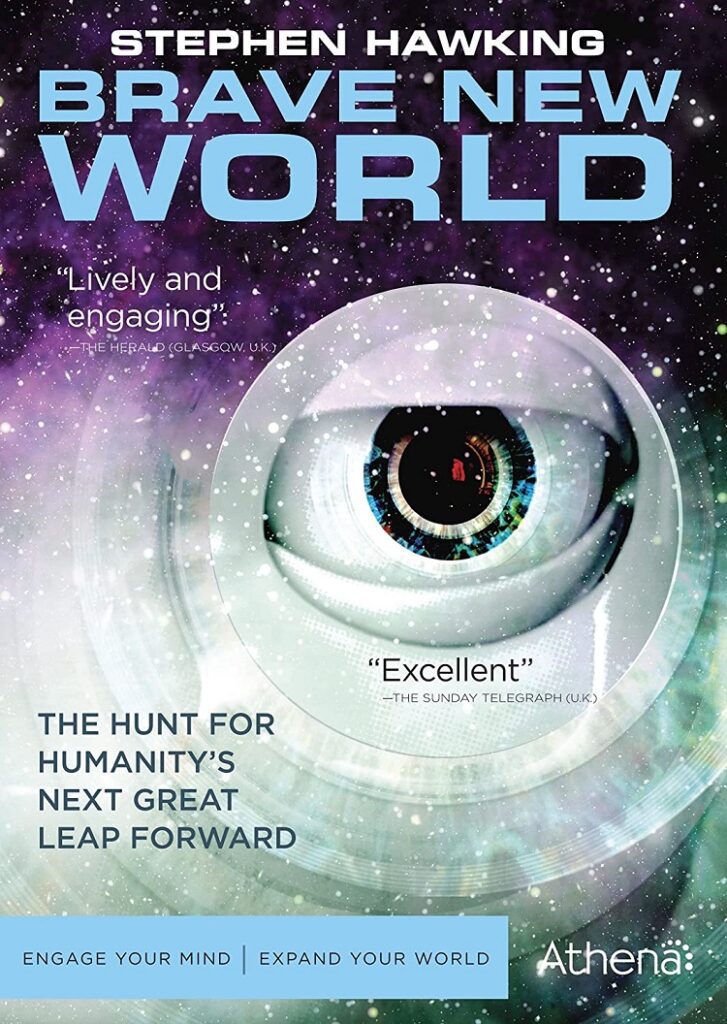
Written by Brandie Ashe
Making science both fun and educational can be a difficult task. If the “techie talk” falls into that dry wasteland of too much monotonous detail, you risk losing a portion of the audience to boredom or confusion. Conversely, gloss over some of that detail, and the nuances of the discussion are lost, resulting in an incomplete understanding of the subject matter that shortchanges the viewer. To be successful, the presentation must be balanced—sometimes delicately—between informative and entertaining, without coming across as overly didactic.
Thankfully, Brave New World, 2011’s successful BBC documentary series hosted by legendary physicist Stephen Hawking, maintains that balance quite well, injecting humor, wonder, and genuine excitement into the discussion of modern scientific breakthroughs that promise to change our collective way of life for the better. Joining Hawking are notable figures from various fields of study, among them evolutionary biologist Richard Dawkins, space scientist Maggie Aderin-Pocock, medical scientist (and House of Lords peer) Robert Winston, comparative anatomist Joy S. Reidenberg, and naturalist/wildlife filmmaker David Attenborough. These brilliant thinkers, having chosen to discuss the technological and scientific marvels they each judge to be the most noteworthy, enthusiastically travel the globe to present their findings to the audience. The end result is a fascinating examination of scientific discovery that (accurately) bills itself as “the hunt for humanity’s next great leap forward.”
The miniseries, which Acorn Media is now releasing on DVD in North America for the first time, is broken up into five episodes. Each episode focuses on a different area of scientific study, from technological innovations to advancements in our understanding of the world at large. The first disc features three installments. Episode One, “Machines,” highlights five fantastic flights of mechanical fancy, including a driverless car spearheaded by Google engineers and cognitive learning robots called “iCubs” that mimic human development from birth (and are cool and creepy by equal measure). Episode Two, “Health,” focuses on what Hawking labels “the five big killers”—heart disease, cancer, malaria, brain disorders, and viruses—and examines the work of scientists who seek to combat these diseases in order to extend human life. The third episode, “Technology,” examines the modern technological revolution through the lens of such new developments with lasers and the commercialization and privatization of space travel through the company SpaceX.
Disc two kicks off with the fourth episode, “Environment,” which turns the spotlight on scientific efforts to protect and preserve the planet in light of potential disaster; the various segments in this installment include a look at the “Frozen Ark,” a genome project intended to preserve the genetic material of endangered species and the creation of new and more efficient “clean energy” sources. Finally, Episode Five, “Biology,” tackles veritable miracles of the natural world, from the still-untapped secrets of the oceans, which may yet provide cures to numerous diseases, to the potential for human beings to regenerate parts of their bodies—be they internal organs or limbs—upon severe injury (the experimental open-heart surgery conducted on a one-day-old mouse in this episode is particularly intriguing).
As for the technical details of this set: the five episodes of Brave New World (total running time: 231 minutes) are presented in 16:9 widescreen and are subtitled. There are no extras, save a feature with brief biographical sketches of some of the contributors, which is included on the second disc (only the most noteworthy names seem to warrant a biography here—contributors such as British designer Max Lamb, who presented part of the “Technology” episode, are left out). The set also comes with a sixteen-page booklet that provides brief, supplemental information regarding some of the topics discussed in the series.
What Brave New World ultimately shows us is that science, for all its realistic applications, is also something quite magical. That notion is underscored by British physicist Kathy Sykes, who upon riding in Google’s driverless car exclaims, “It’s funny, ‘cause I understand all the different technologies that you’ve combined, but this feels like magic!” Seeing futuristic visions of machinery and technology brought to glorious life does indeed feel like something out of a science-fiction novel. But as Hawking and his crew of experts show us, the advancements highlighted in this series are all too real, and the possibilities they present for further scientific innovation are nothing short of tantalizing.